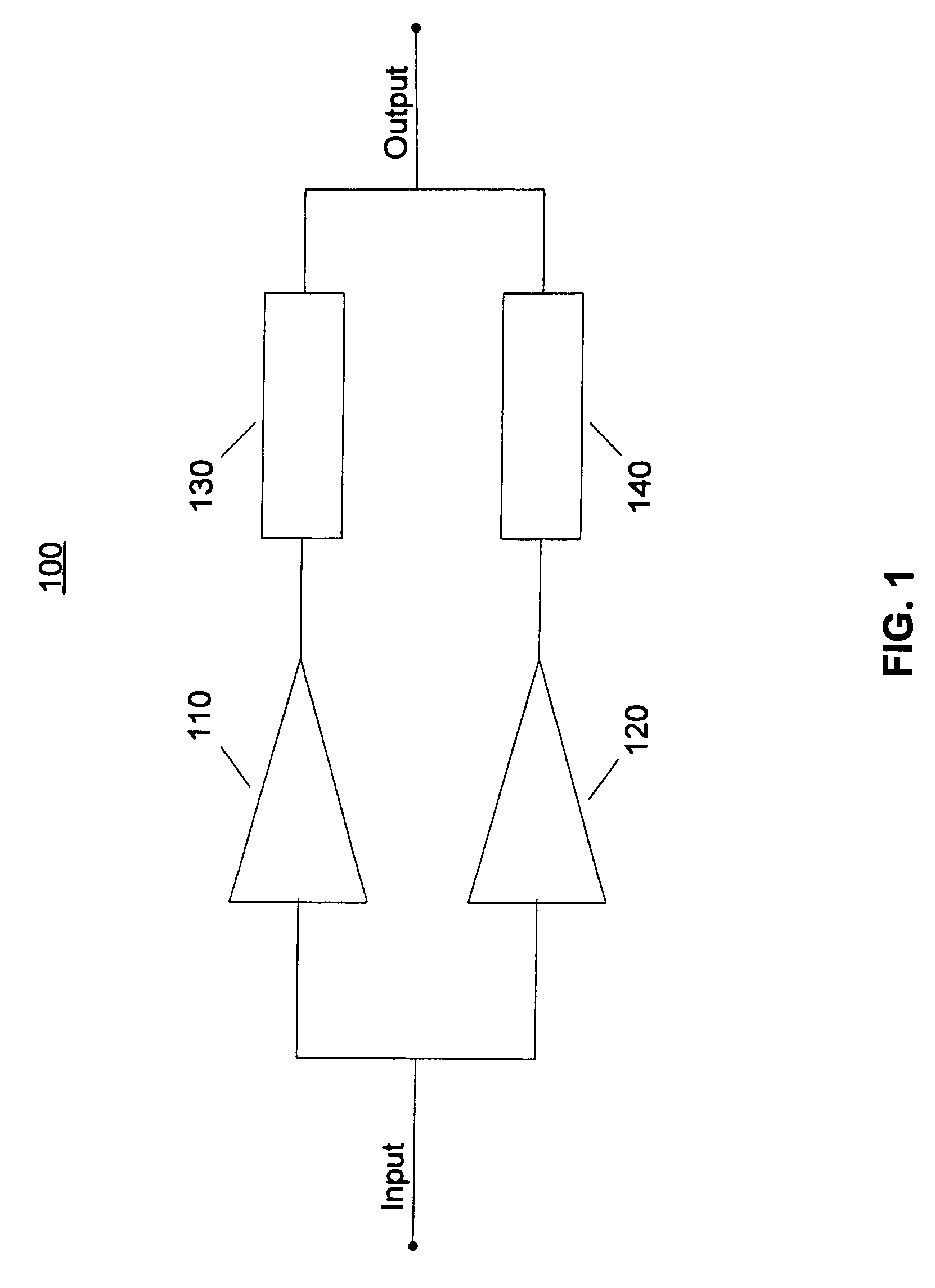Multi-stage power amplifier with enhanced efficiency
a multi-stage, power amplifier technology, applied in amplifiers, amplifiers with semiconductor devices only, amplifiers with semiconductor devices, etc., can solve the problems of reducing the efficiency of amplifiers, limiting output power, and limiting the efficiency of wireless communication devices, so as to and improve the efficiency of signal amplification
- Summary
- Abstract
- Description
- Claims
- Application Information
AI Technical Summary
Benefits of technology
Problems solved by technology
Method used
Image
Examples
Embodiment Construction
[0025]A block diagram of an RF / Microwave multi-stage power amplifier in accordance with a preferred embodiment of the invention is shown in FIG. 2. Power amplifier 200 comprises two amplifying stages 210 and 220, an output matching network 230, connected to the output of the first amplifying stage, and an output pre-matching network 240, connected between the outputs of amplifying stages 210 and 220. Power amplifier 200 further comprises power control circuits (not shown) connected to amplifying stages 210 and 220 that are capable of enabling or disabling each stage. By means of this circuit topology, amplifying stage 210 may be presented with a first predetermined output impedance suitable for its efficient operation, while amplifying stage 220 may be presented with a second output impedance suitable for its efficient operation.
[0026]In a preferred embodiment, amplifying stage 210 has a greater power capacity than amplifying stage 220, which enables power amplifier 200 to operate i...
PUM
 Login to View More
Login to View More Abstract
Description
Claims
Application Information
 Login to View More
Login to View More - R&D
- Intellectual Property
- Life Sciences
- Materials
- Tech Scout
- Unparalleled Data Quality
- Higher Quality Content
- 60% Fewer Hallucinations
Browse by: Latest US Patents, China's latest patents, Technical Efficacy Thesaurus, Application Domain, Technology Topic, Popular Technical Reports.
© 2025 PatSnap. All rights reserved.Legal|Privacy policy|Modern Slavery Act Transparency Statement|Sitemap|About US| Contact US: help@patsnap.com



